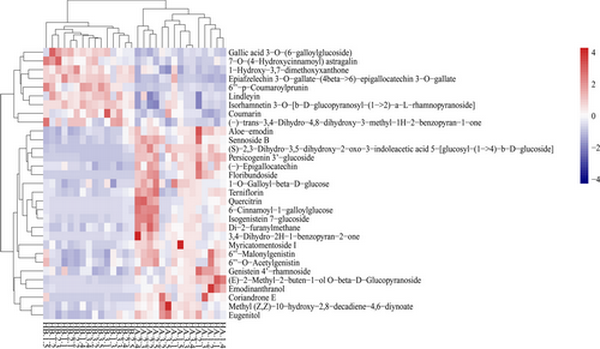Rheum tanguticum (Rh. tanguticum) is an important traditional Chinese medicine plant, “Dahuang”,which contains productive metabolites and occupies wide habitats on the Qinghai-Tibet plateau. Plants occupying wide habitats usually vary in phenotypes such as in morphology and metabolism, thereby developing into different ecotypes. Under canopy and open habitats are a pair of dissimilar habitats which possess Rh. tanguticum plants. However, few studies have focused on the effect of habitats on Rh. tanguticum growth, particularly combining morphological and metabolic changes. This study focused on Rh. tanguticum plants growing in under canopy and open habitats where morphology and metabolism changes were quantified using non-target metabolism methods. The obtained results indicated that the two dissimilar habitats led to Rh. tanguticum developing into two distinct ecotypes where the morphology and metabolism were simultaneously changed. Under canopy habitats bred morphologically smaller Rh. tanguticum plants which had a higher level of metabolites (22 out of 31) which included five flavonoids, four isoflavonoids, and three anthracenes. On the other hand, the open habitats produced morphologically larger Rh. tanguticum plants having a higher level of metabolites (9 out of 31) including four flavonoids. 6 of the 31 metabolites were predicted to have effect targets, include 4 represent for under canopy habitats and 2 for open habitats. Totally, 208 targets were connected, among which 42 were communal targets for both under canopy and open habitats represent compounds, and 100 and 66 were unique targets for under canopy superior compounds and open habitats superior compounds, respectively. In addition, aloe-emodin, emodin, chrysophanol, physcion, sennoside A and sennoside B were all more accumulated in under canopy habitats, and among which aloe-emodin, emodin, chrysophanol and physcion were significantly higher in under canopy habitats. This study determined that Rh. tanguticum growing in under canopy and in open habitats developed into two distinct ecotypes with morphological and metabolic differences. Results of network pharmacology study has indicated that “Dahuang” coming from different habitats, such as under canopy and open habitats, are different in effect targets and thus may have different medicinal use. According to target metabolomics, under canopy habitats may grow better “Dahuang”.

Fig. 5 The hierarchical cluster analysis of differential metabolomics in samples of the two different habitats. The red color represents higher
metabolite contents while the blue color represents lower contents
This result was published in BMC Plant Biology(IF=3.497)with the title of "Non-target metabolomics revealed the differences between Rh. tanguticum plants growing under canopy and open habitats ".
The link below will guide you to the reading:
https://bmcplantbiol.biomedcentral.com/articles/10.1186/s12870-021-02897-8
